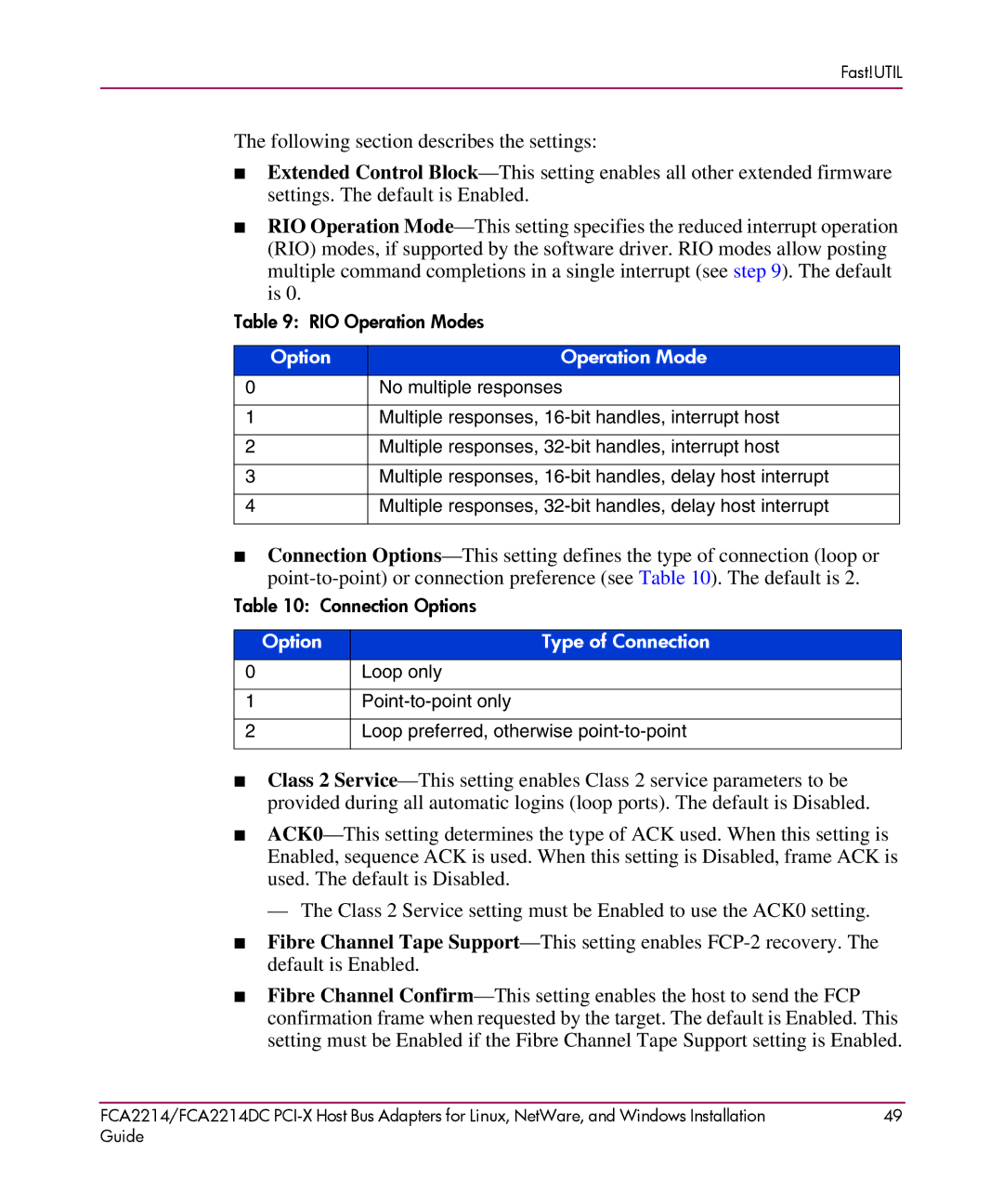Table 9: RIO Operation Modes Option
Fast!UTIL
The following section describes the settings:
■Extended Control Block—This setting enables all other extended firmware settings. The default is Enabled.
■RIO Operation Mode—This setting specifies the reduced interrupt operation (RIO) modes, if supported by the software driver. RIO modes allow posting multiple command completions in a single interrupt (see step 9). The default is 0.
Operation Mode
No multiple responses
Multiple responses, 16-bit handles, interrupt host
Multiple responses, 32-bit handles, interrupt host
Multiple responses, 16-bit handles, delay host interrupt
Multiple responses, 32-bit handles, delay host interrupt
■Connection Options—This setting defines the type of connection (loop or point-to-point) or connection preference (see Table 10). The default is 2.
Table 10: Connection Options | |
Option | Type of Connection |
0Loop only
1Point-to-point only
2Loop preferred, otherwise point-to-point
■Class 2 Service—This setting enables Class 2 service parameters to be provided during all automatic logins (loop ports). The default is Disabled.
■ACK0—This setting determines the type of ACK used. When this setting is Enabled, sequence ACK is used. When this setting is Disabled, frame ACK is used. The default is Disabled.
— The Class 2 Service setting must be Enabled to use the ACK0 setting.
■Fibre Channel Tape Support—This setting enables FCP-2 recovery. The default is Enabled.
■Fibre Channel Confirm—This setting enables the host to send the FCP confirmation frame when requested by the target. The default is Enabled. This setting must be Enabled if the Fibre Channel Tape Support setting is Enabled.
FCA2214/FCA2214DC PCI-X Host Bus Adapters for Linux, NetWare, and Windows Installation | 49 |
Guide | |

